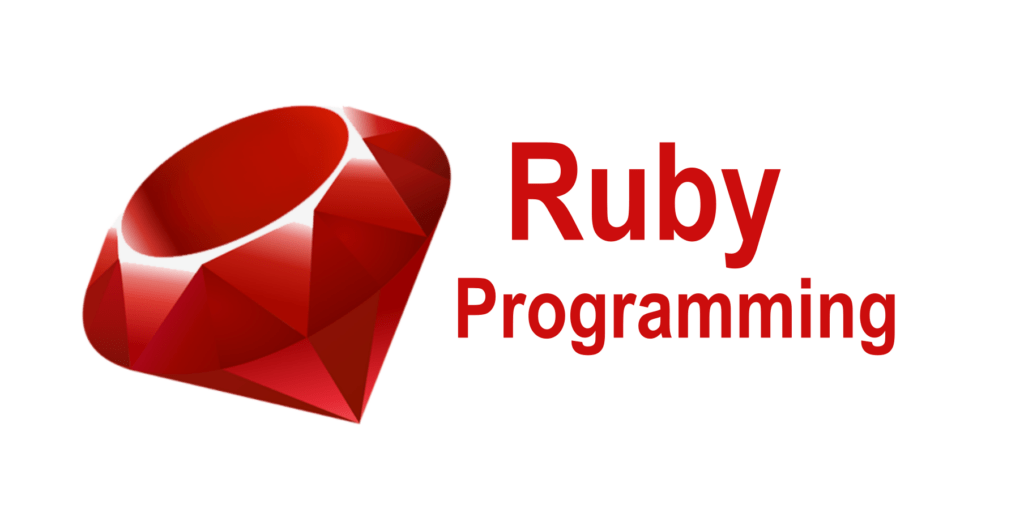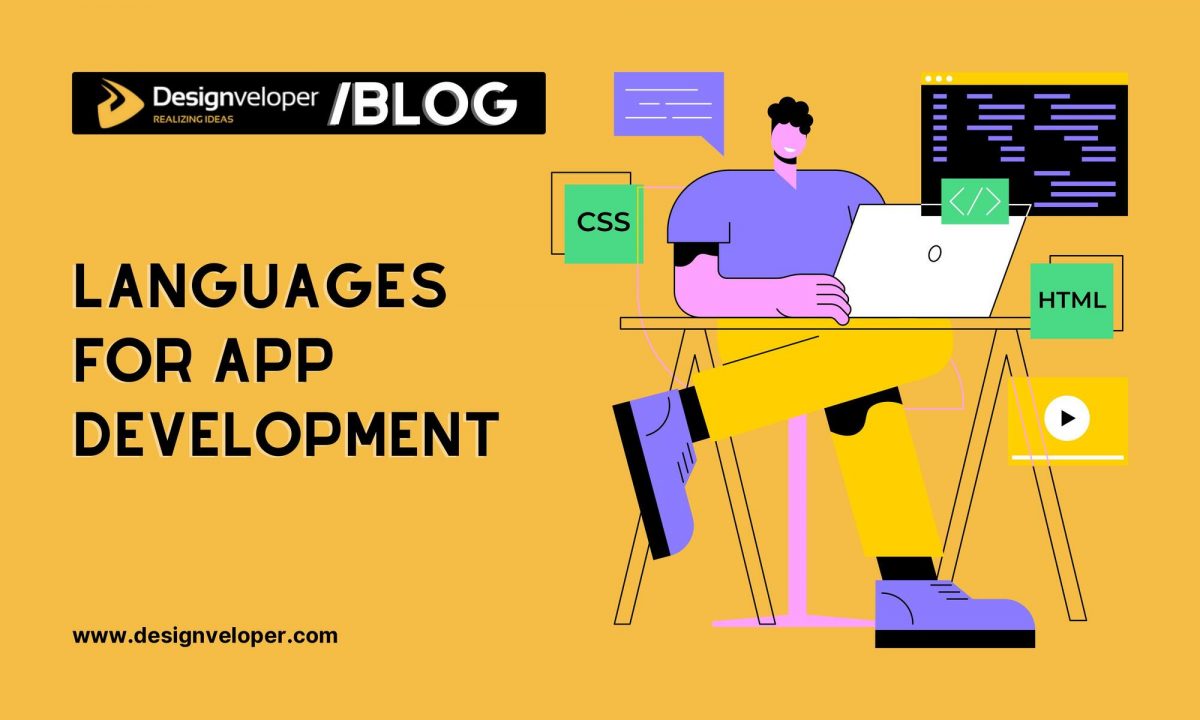There are currently many different programming languages with similar qualities that developers can choose from. Ruby, however, stands out. It is a popular programming language among developers because it lets them make apps quickly while keeping the code clear and in organization. Many people think Ruby is a very artistic and beautiful language. Even so, it is also useful and easy to use.
In this article, we’ll talk about what Ruby is and why so many cloud developers choose to use it at the moment. Also, we’ll talk about what makes Ruby such a popular language. In this section, we’ll talk about the different usages of Ruby and give an overview of how Ruby, Ruby on Rails, and Python are different.
What is the Ruby Programming Language?
Ruby is a general-purpose programming language that is still widely used and in high demand on the job market today. This is because many Rails apps are written in Ruby, which makes Ruby a very popular language. It is easy to read and understand, which makes it easy to get, but it packs a big punch. Ruby was the foundation that companies like Twitter, SoundCloud, Goodreads, and Kickstarter used to build their products.
Ruby is a general-purpose programming language that is dynamic, self-reflective, and based on objects. It was made by Yukihiro Matsumoto and is the purest form of an Object-Oriented language. Except for the blocks, everything in Ruby is an object. However, you can use procs and lambdas instead of blocks. Ruby was made so that it could act as a sensible buffer between human programmers and the computer hardware underneath. This was the main reason why Ruby was made.
Ruby is easier to use and learn than other programming languages like C or Java. This is because its syntax is more like English. C and Java are two other languages that can be used to write programs. Ruby’s syntax is so simple that you can understand it without having written a line of code in your life. Ruby is a good option to think about if you want to learn a programming language for the first time.
History
In the middle of the 1990s, Ruby was made by a Japanese computer programmer named Yukihiro “Matz” Matsumoto. At the time, Matsumoto was an expert in many programming languages, such as Perl, Eiffel, Smalltalk, Lisp, and Ada. He tried to take the best parts of each of these languages and put them into Ruby.
Ruby was first made available to the public in 1995, but only in 2006 that it became popular. Since then, Ruby has gained a large number of users all over the world. Programmers from many different fields use it to make some of the best apps in the world. There are also big groups of Ruby fans who get together regularly in big cities for Ruby-focused conferences.

The best thing about Ruby is that it is completely free. Not only is it free to use, but so is its source code. It can be copied, changed, and passed on in any way that makes sense.
Ruby on Rails is a framework for making websites. It was made available to the public in 2005. Since then, that is what most people know about Ruby. It completely changed how web development was done by making it possible to make sophisticated and easy-to-use online applications in a much shorter amount of time than was possible before.
The framework was an instant hit with startup business owners who were short on time. This is because it let small teams build big apps in a short amount of time. It is a web application framework that is used by many well-known websites, such as Shopify, Square, Instacart, Twitch, SoundCloud, GitHub, Kickstarter, Ask.fm, and even Hulu.
Recommended reading: Top 7 Web Development Languages To Use In 2022
Use Cases
Ruby is a general-purpose programming language that is easy to move around and flexible. It is a powerful programming language that can be used to make desktop programs, static websites, data processing services, and even systems that take care of things on their own. It can also be used with web servers and DevOps, as well as for web scraping and crawling. When you use the features of the Rails application framework, you can do a lot more, especially when it comes to making web apps that are driven by a database.
1. Web Development
Ruby is a very popular programming language in part because of the Ruby on Rails framework, which caused a revolution in the field of web development. Before the Rails framework came out in 2005, developers had to spend way too much time writing code that was both repetitive and standard. This problem was fixed when the Rails framework came out. It gives developers everything they need to make scalable websites right out of the box. You can run a simple command to produce boilerplate code, build a database model or generate an appropriate file structure. Because of this kind of automation, developers can spend more time on the logic of a web app and less time on tasks that don’t add much value.
2. DevOps & Automation
Ruby is a well-known programming language that is often used in DevOps, website deployment, and automation. Take the web application deployment platform Heroku, which is used by a lot of people. This platform’s rise in popularity can be explained by the fact that DevOps engineers are not needed to test, deploy, or stage web applications. At first, Heroku only worked with apps written in the programming language Ruby.
Ruby is used to make Vagrant, which is a well-known tool for managing virtual machines. Thanks to Vagrant, developers can now run software made for a certain operating system on any other operating system. For example, a developer can change a service that only works with Linux into other formats.
3. Static Site Generation
When you go to a regular web page, the site uses server-side code to build the HTML content that it then sends to your browser. This code is on the server of the website. This means that the URL you went to does not link to an HTML file. Most of the time, this kind of HTML development is not the best way to serve web pages to customers. The best way is to use a static site generator like Jekyll, which is one of the most well-known static site generators and is written in Ruby.
A static website generator is a piece of software that uses code to make all of the web pages for a website at once. After that, these web pages will be saved on a server, and when you go to the website, you will see a static HTML file instead. Websites become more useful, safe, and easy to set up because of this. A static website generator is the best way to make a website with fixed content.
4. Web Servers
Passenger and Puma, two of the most popular web application servers, both support Ruby. Web application servers like these are in charge of handling HTTP requests, managing processes and resources, and letting people keep an eye on things and figure out what’s wrong.
5. Data Processing
Ruby is a great language for processing data, in part because its syntax is easy to read. Ruby also has built-in functions like map, reduce, and select that are very useful. With these functions, it’s easy to process, clean, and filter data.
6. Web Scraping
Ruby comes with a number of packages already installed, like Vessel, that make it easy to parse data from websites. With Vessel, it’s easy to make Ruby programs that can quickly and easily crawl and download web pages. The HTML text that was crawled can then be parsed with Nokogiri, which is another popular Ruby module. With this library, you will be able to do data analysis, such as building a machine learning model from crawled data. You will also be able to prepare the data that was crawled for new HTML or XML objects.
Recommended reading: Top 4 Best Programming Language for Beginners in 2022
Benefits of the Ruby Programming Language

It won’t take you long to find references to Ruby on Rails or the Ruby programming language when you look into computer programming. Both of these are very popular topics. The Ruby project’s official website says that the Ruby programming language is a careful mix of imperative programming and functional programming. It was meant to be simple and easy to understand, but not so simple that it wouldn’t work. Ruby has a loyal following of people who think it is “a beautiful, artful language”
To be precise, Ruby is a scripting language for front-end and back-end web development, and other similar applications. It is an object-oriented language that is flexible and dynamically typed. It has a high-level grammar that makes programming with it feel almost as natural as writing in English. In fact, some people think they can understand Ruby code before they learn how to program.
Ruby on Rails is the web framework for Ruby. It is one of the most popular and well-known web development frameworks for any language. Ruby may be best known for being used to build websites, but this flexible programming language can also be used for a wide range of other things. Some examples of these types of technologies are automation, command-line tools, the creation of static sites, DevOps, web scraping, and data processing.
Ruby is a language that can be used in a lot of different ways. This may be its most important feature. Users of Windows, macOS, Linux, UNIX, and DOS will have no trouble using its features. It is such a flexible programming language that you can almost certainly use it for any computer programming task you need to do.
The Programming Language Ruby vs. the World
Ruby is a high-level programming language that can be used by itself. But it’s impossible to talk about Ruby without also talking about its main competitor and its framework.
Ruby on Rails
Ruby is a high-level programming language that can be used by itself. But if you talk about Ruby, you have to talk about Rails at some point. Ruby was already a popular and well-known programming language when Ruby on Rails, an application framework, came along and made it even better for use in the cloud. The helpful and friendly people who work at rubyonrails.org say that Ruby on Rails is “an open-source web framework that is optimized for programmer happiness and sustainable productivity,”
The Ruby on Rails framework is made up of Ruby code that has already been written. This code is used for many things, such as communication, file management, connecting to a database, and more. It takes care of the boring tasks so you can focus on finding ways to solve problems. Don’t Repeat Yourself, or DRY for short, is one of the most important rules of the Rails framework, and it is necessary for the framework to work well.

The Ruby on Rails content management system runs more than a million websites, including some of the most popular in business and entertainment. GitHub, Twitch, Bloomberg, SoundCloud, Hulu, Square, Basecamp, Airbnb, Hulu, The Weather Channel, Instacart, and Twitter are some of these sites.
Ruby vs. Python
Python is probably the programming language that is compared to Ruby the most, since it can be used for many of the same tasks as Ruby. Because they are so similar, it can be hard for people who are just starting out to decide which one to learn. As an example, both are server-side high-level scripting languages. Both can be used to make web apps, and they work on many different operating systems.
The two are also compatible with GNU Debugger (gdb) styles, Emacs modes, and embedded doc tools. This means that you can write code in either Ruby or Python in GNU Debugger (gdb). Both languages have a feature called IRB that acts as an interactive prompt, and objects written in both languages are strongly and dynamically typed. Last but not least, and perhaps most importantly, both Python and Ruby have syntax that is well-organized and easy to read.
Even though Python and Ruby have a lot in common, there are also many differences between the two. For example, Ruby only works with EclipseIDE, while Python works with a number of IDEs. Mixins can be used in Ruby, but this is not possible in Python. Ruby also has a smaller number of library options than Python. In conclusion, the Python community is mostly interested in Linux and academics, while the Ruby community is mostly interested in web development. These are the main differences between the two languages, but there are a few others that you should know about before making your choice.
Conclusion
You should now have a good idea of what Ruby programming is, what its most common uses are, and what you need to know to get started. Ruby is a useful and versatile programming language that can be used for many different things. Also, if you learn it well, you might have a big advantage over other coders in the coding market. Even so, this article doesn’t even scratch the surface.
You will have to learn a lot more along the way if you want to get good at Ruby or any other kind of coding. Make sure you stay up-to-date by reading our blog, so you can get more help along the way.





















